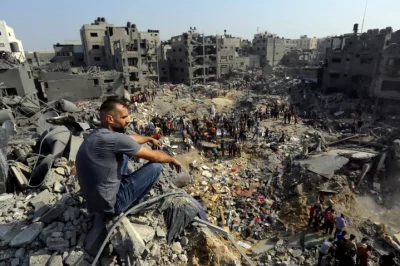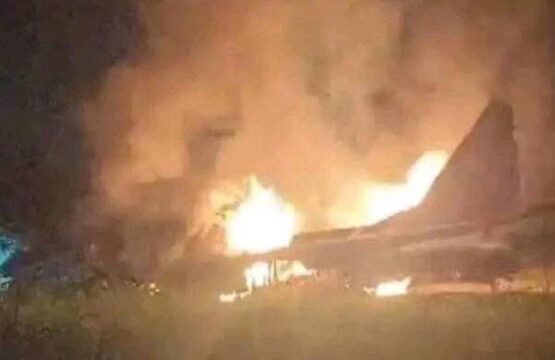The Palestine-Israel conflict is a long-standing rivalry in the region of the Levant between the Israeli state and the Palestinian people. This conflict includes the Gaza Strip, Jerusalem West Bank, and Khan Younis. This conflict began in the 20th century. The main areas of this conflict include the status of Jerusalem, water rights, Jewish settlements, and Palestinian freedom rights.
The roots of this conflict can be traced back to the “Balfour Declaration,” passed by the British Government on November 9, 1917. the primary goal of this declaration was to build a national homeland for the Jews in Palestine. Soon after this, in 1947, the United Nations Partition Plan triggered inter-communal conflict between Arabs and Jews. This partition gave rise to the Nakba of 1948, but the British Government rejected the plan on May 14, 1948, and Israel declared their independence on the same day.
Since then, a series of conflicts between the Arabs and Israel began, which is still ongoing. This led to bloody wars like the First Arab-Israeli War and the Second Arab-Israeli War. The historical turning point in this conflict was when Sheikh Ahmed Yassin, in the Gaza Strip, formed a militant organization called Hamas in 1987 to liberate the Palestinian land from the Jews through Jihad.
Hamas launched its first Intifada, which was a series of violent protests, riots, and also a series of suicide bombings against the Israeli settlers, which Hamas Commander Yahya Ayyash planned. Since then, this fierce rivalry has continued. And now, on October 7, 2023, Hamas launched its most extensive operation called “Storm Al-Aqsa,” in which they used surprise missile attacks, ambushes, and rocket attacks.
After this attack, Israeli Prime Minister Benjamin Netanyahu called it an attack on Israeli sovereignty and launched a large-scale operation against Hamas called “the Iron Sword,” composed of air strikes and imposed a ground siege on the Gaza Strip.
The main reason for the Hamas attack was the unending atrocities carried out by Israeli Authorities against the Palestinian people, especially in the Gaza Strip. So, the main aim of Hamas was to stop their atrocities, as said by Khalid Qadomi to Al Jazeera that we are demanding from the international community to stop the Israeli atrocities in Gaza against the people of Palestine, our Holy Sites like Al Aqsa Mosque.
Secondly, Hamas wanted to break the normalization process between Arab states and Israel as said by US President Joe Biden that Israel and Arab countries were very near to a potential normalization agreement, but at this critical point, Hamas launched its attack because they were pretty sure that this would disrupt the normalization process. Because soon after the attack, the Arab countries raised their concerns regarding the people of Palestine, and in this way, the deal was not reached.
Also Read: Potential Inclusion of Aramco Refinery Project in CPEC Framework
Additionally, Iran is also one of the primary stakeholders in this issue, and they have excellent relations with Hamas. According to the Geopolitics, Iran provides 100 million dollars to Hamas annually for their arms production and group upgrade. Iran also did not want relations between Arabs and Israel to be normalized because this would strengthen Saudi Arabia’s nuclear program and increase its defense cooperation with the United States, which could prove harmful to Iranian interests in the Middle East.
During the G20 Summit in New Delhi, the India Middle East Europe Economic Corridor (IMEC) was announced, which was a joint economic corridor of the United States, Saudi Arabia, the United Arab Emirates, and India, and the route of this corridor was designed to go from the Middle East to Europe. Its success depends on the Arab-Israeli normalization, and if it reached completion, it would have seriously hampered the Iranian interests in the Middle East.
To stop it, Iran initiated a significant war through Hamas, and Iran’s policy has been successful so far. Because of the Israeli attacks, the Arab people became outraged against Israel, and the same public sentiments were witnessed; the Arab countries went on the back foot from normalization, and the process for IMEC also stopped. This war has created political turmoil and uncertainty in the Middle East, and the region’s stability was at stake. They also blurred the political scenario of the near future.
The war between Hamas and Israel has been going on for almost five months, but so far, the two sides have not reached any conclusion. There have been quite heavy casualties on both sides. Hamas attacks, according to media reports, have killed between 4 and 5 thousand soldiers, but according to Hamas sources, this number is even higher, and many soldiers have also been injured; on the other hand, the people and infrastructure of Gaza have also been severely damaged.
More than 30,000 Palestinians have been killed in airstrikes and ground attacks, and much of Gaza City has been left in ruins. Some of the objectives for which Hamas started the war have been fulfilled, such as the release of Palestinian prisoners from Israeli prisons and the prevention of Arab-Israeli normalization. Still, at the same time, the people of Gaza have suffered severe losses.
On the other hand, Israel’s economic and military infrastructure has also been severely damaged. According to media sources, Israel is losing millions of dollars daily, and rocket attacks by Hamas fighters are targeting many military vehicles. But as it is a well-known saying that war is not the solution to any problem, the parties on both sides should find a solution to this problem through negotiations so that stability can be established in the region and the people of the region can live in peace.
***Author Nousheen Urooj is a student of strategic studies from Karachi University.









2 responses
absolutely amazing blogpost from nousheen
Informational Blog Keep up